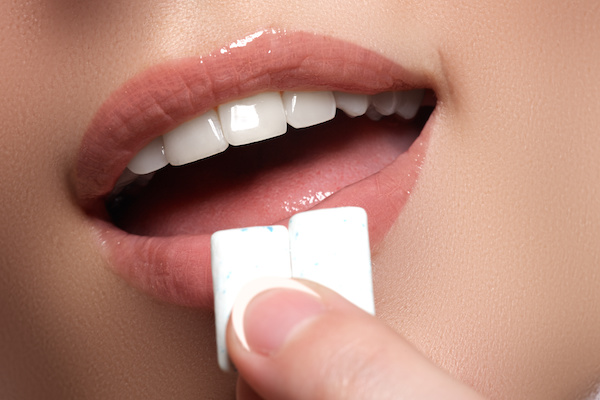
Chewing Gum and Your Oral Health
Candy is arguably bad for your oral health. Sugars that are in sweets can lead to serious cases of dental decay that can call for fillings, root canals and various degrees of dental work. However, there is one type of candy that can provide oral health benefits, and that is sugar-free chewing gum. Gum can simultaneously stimulate saliva production, spur the immune system, and freshen breath. If you’re looking for something to help keep your teeth healthy between your twice daily brushing, look no further than a stick of ADA approved, sugar-free chewing gum.
Why Chewing Gum is Beneficial
The main reason why chewing gum is beneficial for your oral health is because it stimulates the salivary glands in your mouth. Saliva is our body’s first defense against harmful bacteria. It flushes food particles and much remaining sugar from the mouth. By moving food and sugars into the digestive system it can not sit in the mouth and begin forming biofilms that cause plaque and eventually lead to cavities. Saliva is very important for our oral health, and by chewing a piece of sugar-free gum after you eat you can help to clear your mouth of any stray food particles.
Gum is also beneficial because the simple act of chewing helps to stimulate the immune system which can help to effectively protect the mouth from infection. Researchers found that the act of chewing induces the protective response of the immune system and spurs the creation of Th17 cells. These cells are well known to help fight oral infections. Normally, other “barrier sites,” the skin, mouth, and gut, need a specific bacteria to breach the barrier before creating these T-cells to fight off the infection. This is not the case for the mouth, the irritation caused by chewing provides the immune system all the information it needs to prepare the mouth for certain kinds of common oral infections. They also found, by studying juvenile and adult mice, that the immune system is able to learn these patterns of bacterial infection and work to more effectively fight infection as the body ages. This is fascinating knowledge because now we understand a bit more about how the immune system works, and how things like chewing gum can help to keep the mouth healthy.
ADA approved Sugar-free gums are easily found in grocery and convenience stores across the United States. These sugar-free options commonly use xylitol to sweeten the product to feign a sweet, sugar-like taste. Xylitol is a compound derived from the bark of birch trees and the husks of corn. It tastes like sugar, but its chemical structure is very different. Because of this difference the harmful bacteria in the mouth cannot digest it and begin to form the glycoproteins that spur the development of biofilms and plaque. The sweetness is safe, and spurs the production of saliva which, as we discussed above, helps to move food particles and harmful bacteria through the digestive system and away from the mouth.
If you are looking for a great way to help clean your mouth in the middle of the day without brushing your teeth, open a pack of ADA approved, sugar-free gum. It will not only freshen your breath, but can help remove decay-causing food particles with saliva flow and spur the production of Th17 cells which aid your immune system. If you have any questions about what types of xylitol-based chewing gums are best, just ask your Melbourne, Florida dentist for a recommendation.

